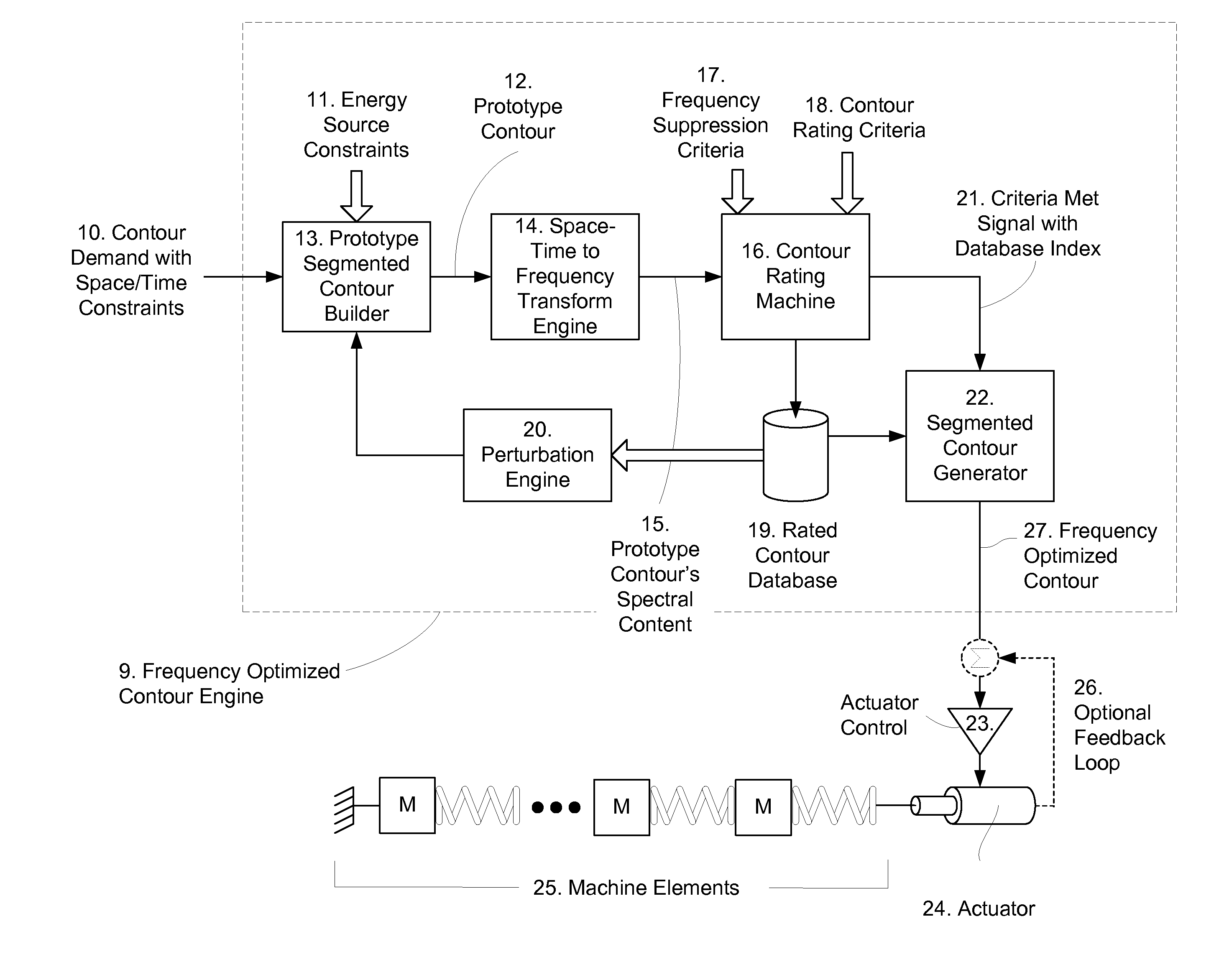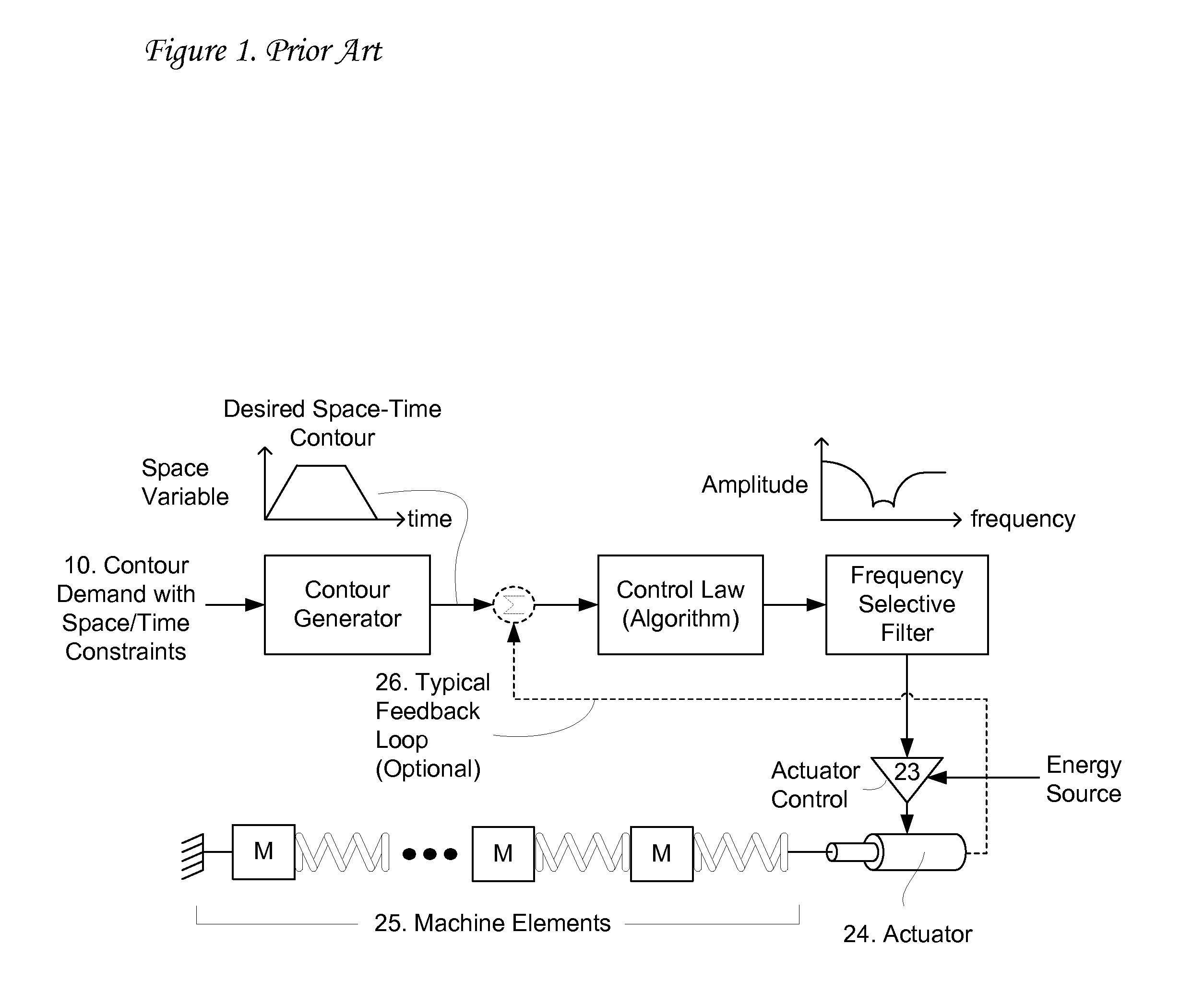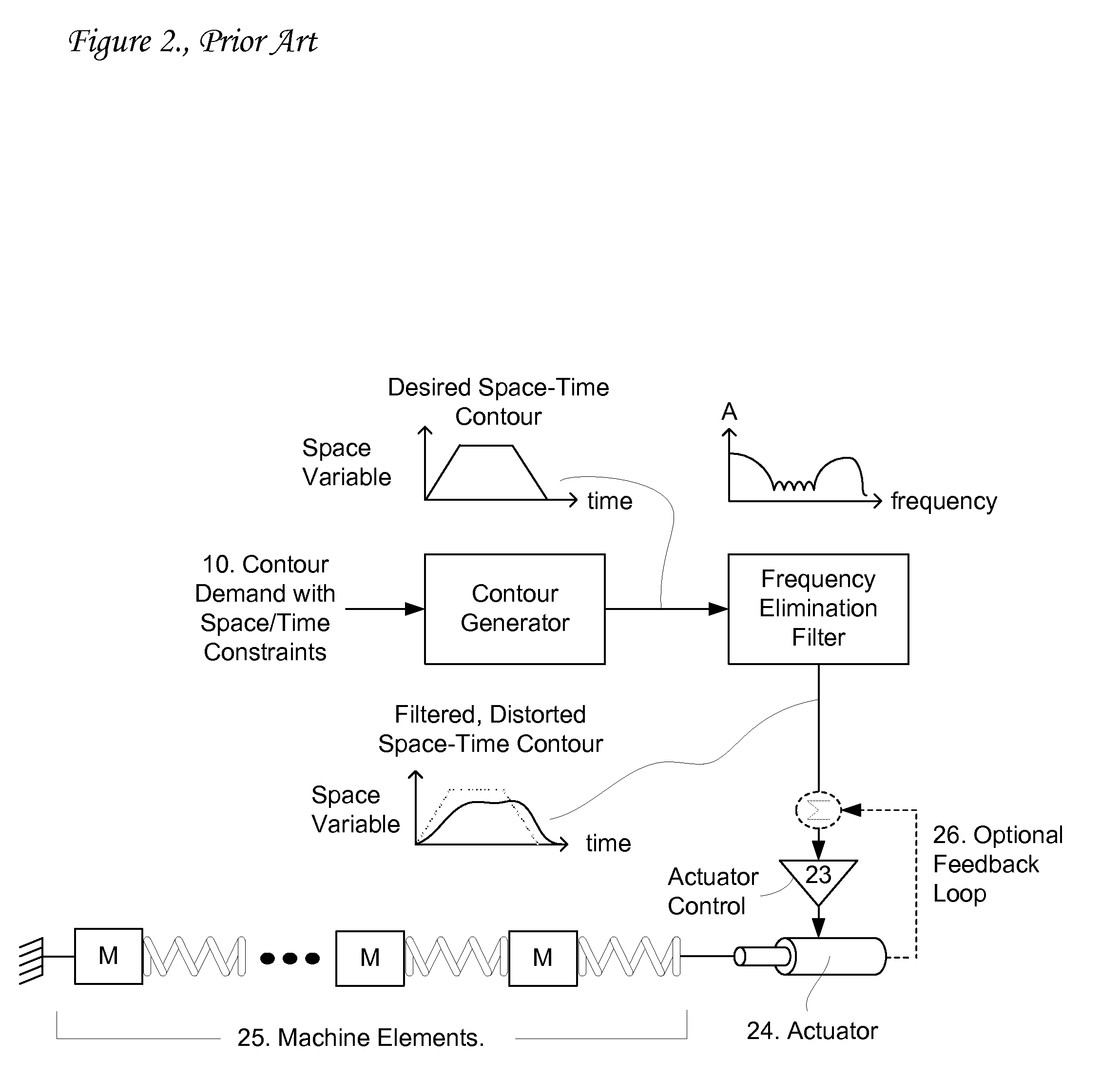Method and system for vibration avoidance for automated machinery
- Summary
- Abstract
- Description
- Claims
- Application Information
AI Technical Summary
Benefits of technology
Problems solved by technology
Method used
Image
Examples
Embodiment Construction
[0023]As previously noted, frequency-optimized-contours are produced in our invention, without any post filtering or shaping, by concatenating multiple space-time contour segments together in such a way as to be mostly free of energy at the frequencies of interest while meeting the other design goals specified for the space-time contour. The segments used to construct these frequency-optimized-contours are a series of concatenated polynomial segments where each polynomial segment can be defined by the equation: x=k0+k1t+k2t2+ . . . +kntn, etc. or equivalent algebraic forms, the independent variable t being time. These segments can define the variable to be controlled (e.g. speed or distance) versus time, or define one of the controlled variable's time-derivatives (e.g., the slope of the speed vs. time, etc.).
[0024]As an example, if the frequency-optimized-contour to be designed was to be a distance vs. time contour, the concatenated segments used to construct the contour could be li...
PUM
 Login to View More
Login to View More Abstract
Description
Claims
Application Information
 Login to View More
Login to View More - R&D
- Intellectual Property
- Life Sciences
- Materials
- Tech Scout
- Unparalleled Data Quality
- Higher Quality Content
- 60% Fewer Hallucinations
Browse by: Latest US Patents, China's latest patents, Technical Efficacy Thesaurus, Application Domain, Technology Topic, Popular Technical Reports.
© 2025 PatSnap. All rights reserved.Legal|Privacy policy|Modern Slavery Act Transparency Statement|Sitemap|About US| Contact US: help@patsnap.com



